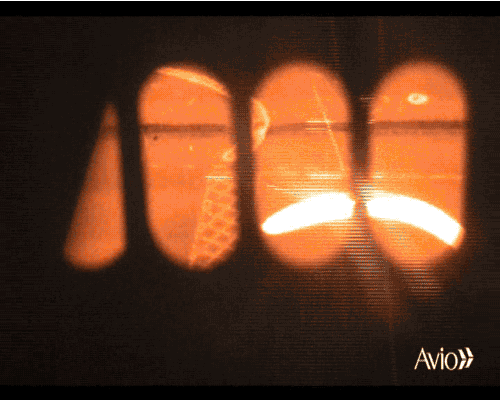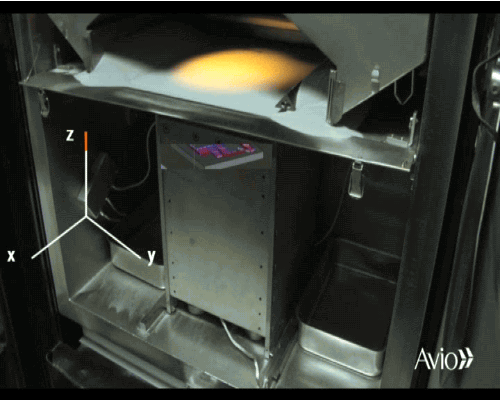Aug. 18, 2014
GE is using laser-powered 3D printers and other advanced manufacturing tools to make parts and products that were thought impossible to produce using traditional technology.
GE's aviation division, the world's largest supplier of jet engines, will use 3D printing technology to produce fuel nozzle for use in jet engines. Currently GE is investing $50 million to bring 3D printing to its manufacturing plant in Auburn, Ala. When it opens in 2015, the factory will be producing fuel nozzles for the next-generation LEAP jet engine, as well as 3D-printed parts for the GE9X engine, the world's largest jet engine which will be installed on the next-generation Boeing 777X long-haul passenger jet.
The new plant will be using direct metal laser melting (DMLM) method to print parts directly from a 3D computer drawing. This process deposits the powder in layers that are as thin as 20 microns, and melts together thin layers of fine metal powder with a high-powered laser. But for producing light-weight turbine blades for the GEnx engine, GE says it will use another breakthrough 3D printing process.

Developed by engineers at the Italian aerospace company Avio and Sweden's Arcam, the method, called electron beam melting or EBM, uses electron beam as its power source to melt metal powder layer by layer.
The idea was to use an advanced aerospace material called titanium aluminide (TiAl) to builds the blades. This material is 50 percent lighter than the nickel-based alloys typically used for low pressure turbine blades. According to GE, blades made from the material can reduce the weight of the entire low pressure turbine by 20 percent.
"Although the material is expensive, the weight savings and the fuel consumption savings tied to weight reduction more than pay for it," says Mauro Varetti, advanced manufacturing engineer at Avio.

The machine is using an electron beam to melt the powder (yellow) and build the part
But titanium aluminide is very hard to work with. Traditionally engineers use lost-wax casting or spin casting to make TiAl parts. At GE, engineers uses a 3-kilowatt electron gun to accelerate a beam of electrons to melt the powdered titanium aluminide. The gun is 10 times more powerful than laser beams currently used for printing metal parts, allowing the company to build blades that are more than four times thicker. In addition the printing speed is so fast that allows one printer to produce eight stage 7 blades for the low pressure turbine in just 72 hours. "This is very competitive with casting, which is how we used to make them," says Varetti.

GE will start testing 3D printed blades for the GEnx engine later this year. After that, the part will be used for the GE9X, a new jet engine GE is developing for Boeing's next-generation long-haul plane, the 777X.
Source: GE Reports
Posted in 3D Printing Technology
Maybe you also like:
- New 3D cartilage printing technology could combat Osteoarthritis
- IBM 3D prints world's tiniest magazine cover
- Korean government invests $2.3 million in 3D printing centers
- DrugPrinter, print any drug instantly?
- 3D Printing is one of the hottest outsourced jobs right now
- 3D Printing: one step closer to a Star Trek future? [Infographic]
- OxSyBio raises £1m to develop 3D bio printer to print synthetic tissue, organs
- NTU, Dental Centre Singapore in S$1M 3D bio-printing research tie-up
- ECN uses new DLP technology for 3D printing metals
- Light-directed EPD, a new 3D printing technique with nanoparticles
- Creating multi-color prints using a one-color 3D printer (2)
Hi ThatGuy, The 3d printing processes described above use gas atomized powders that contain the final required composition. The nominal composition of gamma-TiAl used in the Genx engine is Ti-48Al-2Nb-2Cr (at.%) and likely contains very small quantities of boron (0.1 at%) as a grain refiner. In 3D printing, the successive melting of small powder layers will produce much smaller grains (4-15 microns) compared to the casting process. Also, since the final microstructure of TiAl blades in the LPT section of the GEnx engine is a duplex microstructure, there may be a requirement to conduct a solutionizing heat treatment in order to form the duplex microstructure in a 3D printed part depending on the thermal history of the 3D printing process. With a small grain size from the 3D printing process, it is likely that the resulting duplex structure is finer than that of the casting process which will further improve the strength over a typical casting. Cheers
ThatGuy wrote at 8/19/2014 4:18:15 AM:
I thought turbine blades had to be made with grain innoculants in the mold to ensure proper strength?